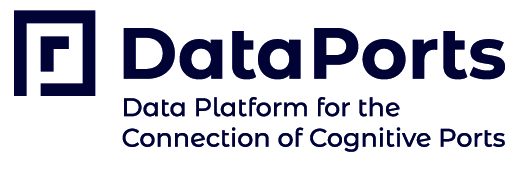The deliverable that contains the report of the dissemination and communication results in the first year of the project is available
The document includes information about the dissemination activities through the different DataPorts dissemination channels, which include the Website of the project and the social media platforms, as well as the dissemination package of the project and the creation of the project’s identity.

In addition, this deliverable contains information about the on-site dissemination events that took place during the first year of the project, including virtual events that diffuse the project’s presence and goals. The scientific dissemination activity of the project is also reported, listing the papers that were published in the context of DataPorts project, as well as its educational contributions.
More specifically, the dissemination activity is depicted through the KPI’s that the project’s communication strategy has achieved. Some indicative KPI’s are the 84 tweets that the Twitter account of the project with 122 followers has tweeted, and the 40 LinkedIn posts that are published to the project’s 101 LinkedIn followers. The number of published blogposts in the project’s website is equal to 8, and the number of reads in DataPorts ResearchGate account is 128. Moreover, the events that DataPorts consortium has participated in are 14 and consist of 10 industry events and 4 workshops.
Lastly, the scientific areas that DataPorts address are multiple but gravitate around the port ecosystem. Therefore, in order to inform the reader about these areas, hereunder are listed the scientific papers that were published in 2020 in scope of DataPorts. The corresponding links are provided as well when applicable.
- Towards a smart port: the role of the telecom industry [1]
- Online Reinforcement Learning for Self-adaptive Information Systems: “Online Reinforcement Learning for Self-adaptive Information Systems” [2]
- Triggering Proactive Business Process Adaptations via Online Reinforcement Learning [3]
- A Scalable and Semantic Data as a Service Marketplace for Enhancing Cloud-Based Applications [4]
- Framework and Methodology for Establishing Port-City Policies Based on Real-Time Composite Indicators and IoT, A Practical Use-Case [5]
- Cost Fairness for Blockchain-Based Two-Party Exchange Protocols [6]

All this information is available here.
